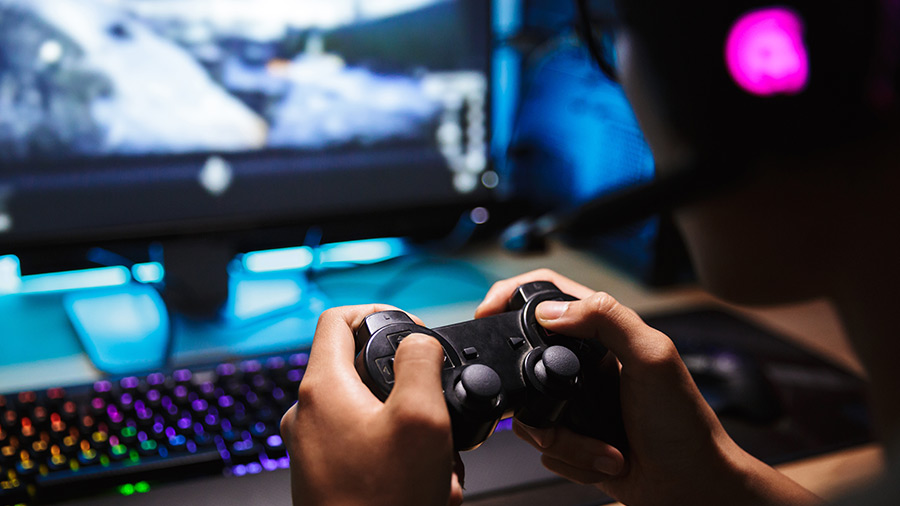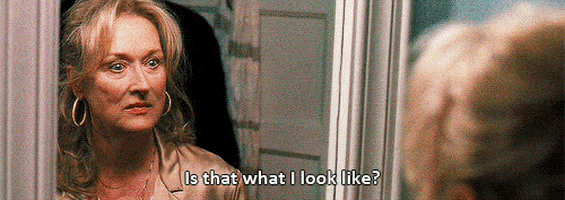“Guys…Give me a genuine
answer: Are you people not at all stepping outside your homes? Like, not at all
meeting friends, making any social contact? Last time I stepped out of my house
was on Monday, that too to buy bread only! I’m
getting tired…I wonder how people survive in isolation and jails?”
I received this
text on a WhatsApp group shared with my girls-gang and couldn’t help but wonder
about the impact of current Corona Pandemic situation on mental health. While
fever, dry cough and tiredness have been reported by the WHO as the common
symptoms of COVID-19; we also need to become sensitive towards the by-producing
mental health disturbance that has begun to thrive in the world-community whilst
being hyper-vigilant to the indicators of this viral infection and restless in
the times of lockdown. As can be seen in the quoted text, my friend reported
“getting tired”—tiredness of mental nature stemming from being indoors for the
last 7+ days and not the pathology of Corona.
The jitteriness
and exasperation from being locked-down is evident from the last line that she
typed out— ‘How do people survive in
isolation and jails?’ Well, here is one of the answers provided in The
Lancet Journal by psychologists: Quarantined people often show emotional
disturbance, depression, stress, low mood, irritability, insomnia, post-traumatic
stress symptoms, anger and emotional exhaustion. In fact, the stressors that
precipitated these reactions were identified as longer quarantine duration,
infection fears, frustration, boredom, inadequate supplies, inadequate
information, financial loss, and stigma. So yes, ‘survival in isolation’ is
indeed marked by several psychological repercussions!
Closely associated with the idea of lost personal
choice is the Fear of the Unknown.
No matter how “chilled” a person you are or how “adventurously” you would like
to live your life, the unpredictability of the course of an illness like Corona
is unpleasant. In an interview with the American Psychological Association
(APA) about the Coronavirus Anxiety, Dr. Fischhoff (an expert in the area)
pointed out that more people die of the seasonal flu on an annual basis than
those who would die of the COVID-19. However, we panic over the possibility of
contracting the Coronavirus because of the novelty involved in its evolution,
course and outcome. Since active efforts by the scientists and governments has
posed the seasonal flu as being a “common” threat, our minds have translated
this into believing it to be a more combatable threat than the corona. Yes, a
guaranteed antidote to the COVID-19 is yet to be discovered. However, does this
imply that Corona is indefinitely going to leave us helpless? How many of us
would confess being guilty of focusing on the rising number of cases in each
country as opposed to the number of individuals who have actually been cured of
the condition? Again, give it time, STAY HOPEFUL!
‘What do I do to deal with the boredom, loneliness and anxiety?’
Let’s try to establish the scientific significance of some
of the tips offered by the University of WhatsApp, national governments, news
agencies and b/vloggers by drawing connections with the above discussed
literature.
1. Practice
Mindfulness: The discussion on Fear of the Unknown
essentially implies that a lot of our anxiety is stemming from our unfruitful
thinking about “What will happen next?” Let’s hit the pause button on that
thought and all engage in this simple exercise:
 Take a few deep breaths and
promise to stay committed to this exercise. Instruct yourself: I will direct the focus of my mind.
Now, list 5 things present in your
environment that you can:
Take a few deep breaths and
promise to stay committed to this exercise. Instruct yourself: I will direct the focus of my mind.
Now, list 5 things present in your
environment that you can:
a. See around yourself at the
moment (e.g. books on the table, color of the walls, etc.).
b. Hear around yourself at the
moment (e.g. birds chirping, the rotating fan, etc.).
c. Feel on your body at the
moment (e.g. hair on your neck, feet on the floor, etc.).
This simple exercise often forms a part of therapeutic
programs targeting anxiety reduction. It will help you to ground yourself
firmly in the present which is the need of this time when the future is unclear
and worrying about it is not going to aid our mental health.
2. Set
a Routine: As mentioned earlier, curtailment of
individual choice is only PERCEIVED. The choice of whether or not we can go
outdoors is beyond us right now but the choice of how we handle our schedules
irrespective of this one small glitch can help us obtain a sense of control and
personal choice.
Some
pointers to be kept in mind while setting up a routine are:
a.
Set
short term, measurable goals that can be achieved by the end of the day. Sit
back, reflect and appreciate yourself to have achieved these small victories.
b. We are stimulation-seeking creatures who get easily bored of relaxing and pursuing creative tasks too! The key then is to actively switch amongst the plethora of activities available to us on a timely basis. Draw mandalas for a while, switch to Netflix later, dig up the books you wished to read but never got the chance and of course, catch up on all that sleep you missed!
c. Remember that ‘normalcy’ is our next door neighbour who is going to strike our doors once the current situation clears. Thus, don’t lose touch with your work, life and friends. Make the most of the technological era we live in to participate in the “WFH Culture”, video-calling the loved ones to satisfy the need for face-to-face interaction and exercising indoors using various Apps or YouTube videos to keep our bodies fresh.
d. On a personal note, I would suggest to actively incorporate the task of sharing household duties into our daily routines such that our moms who often end up picking up the slack get a Corona induced-break-time too!
b. We are stimulation-seeking creatures who get easily bored of relaxing and pursuing creative tasks too! The key then is to actively switch amongst the plethora of activities available to us on a timely basis. Draw mandalas for a while, switch to Netflix later, dig up the books you wished to read but never got the chance and of course, catch up on all that sleep you missed!
c. Remember that ‘normalcy’ is our next door neighbour who is going to strike our doors once the current situation clears. Thus, don’t lose touch with your work, life and friends. Make the most of the technological era we live in to participate in the “WFH Culture”, video-calling the loved ones to satisfy the need for face-to-face interaction and exercising indoors using various Apps or YouTube videos to keep our bodies fresh.
d. On a personal note, I would suggest to actively incorporate the task of sharing household duties into our daily routines such that our moms who often end up picking up the slack get a Corona induced-break-time too!
3. Self-work
and Professional Help: Consider this to be valuable time
that you’ve laid your hands on to explore and work through a few tough areas
that you have been sweeping under the carpet repeatedly.
Some therapeutically valid self-work
exercise sheets that are openly available for dealing with one’s disturbing
thoughts are:
a. A
worksheet to help you become “un-stuck”: https://thiswayup.org.au/wp-content/uploads/2016/03/Module-3-Thought-challenging.pdf
b. A
worksheet to guide you through structured problem solving: https://thiswayup.org.au/wp-content/uploads/2016/03/Module-3-Structured-Problem-Solving.pdf
c. A
worksheet to reduce your tendency to worry: https://www.cci.health.wa.gov.au/~/media/CCI/Consumer%20Modules/What%20Me%20Worry/What%20Me%20Worry%20-%2009%20-%20Accepting%20Uncertainty.pdf
Always remember that you are not alone, not even in
these times of a lockdown! Many free telephonic counselling services have now
opened up in India, especially to provide a pandemic support system. You can
check with the websites of Trijog and ListenWorks to gather more information
regarding the same. Feel free to also contact on the email-id mentioned on this
blog page if you require further assistance in procuring mental health services
or self-help material.
4. Contribute:
With
several funds being opened up and circulated on the social media for
contributing towards the well-being of those in need for a financial aid due to
various reasons during this pandemic, a sense of social participation and human
touch can be achieved. Many of us may not be in a position to make a monetary
contribution and so what I find to be the most valuable contribution is the one
that can be made towards the advancement of science and research. Many
researchers have stepped forward and started online surveys for collecting data
on the psychological, economic and societal impact of the Coronavirus. Such
research will readily help professionals to take informed action based on
public opinion and experiences in the aftermath of COVID-19. Links to 3 such
studies are:
References
Brooks, S. K., Webster, R. K., Smith, L. E., Woodland,
L., Wessely, S., Greenberg, N., & Rubin, G. J. (2020). The psychological
impact of quarantine and how to reduce it: rapid review of the evidence. The
Lancet.
Rawat, M. (2020). Coronavirus pandemic and mental
health: How we can help people in quarantine. Retrieved 29 March 2020, from
https://www.indiatoday.in/world/story/coronavirus-outbreak-covid19-cases-quarantine-mental-health-1652639-2020-03-05
Smith, N., & Barrett, E. (2020). Coping with life
in isolation and confinement during the Covid-19 pandemic | The Psychologist.
Retrieved 29 March 2020, from
https://thepsychologist.bps.org.uk/coping-life-isolation-and-confinement-during-covid-19-pandemic
Speaking of Psychology: Coronavirus Anxiety. (2020).
Retrieved 29 March 2020, from https://www.apa.org/research/action/speaking-of-psychology/coronavirus-anxiety














_-_Global_Citizen_Festival_Hamburg_07.jpg)




